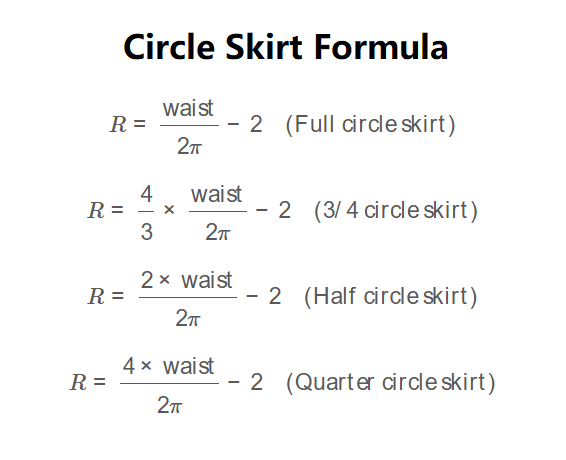 Home
Home
 Back
Back

Definition: This calculator determines the radius (R) from the center to the waistband and the required fabric length for making a circle skirt, based on the waist measurement, desired skirt length, and skirt type.
Purpose: It is used in sewing to calculate the dimensions needed to cut fabric for a circle skirt, ensuring proper fit and flare.
The calculator uses the following formulas to determine the radius (R) based on the skirt type:
\[ R = \frac{\text{waist}}{2\pi} - 2 \quad \text{(Full circle skirt)} \] \[ R = \frac{4}{3} \times \frac{\text{waist}}{2\pi} - 2 \quad \text{(3/4 circle skirt)} \] \[ R = \frac{2 \times \text{waist}}{2\pi} - 2 \quad \text{(Half circle skirt)} \] \[ R = \frac{4 \times \text{waist}}{2\pi} - 2 \quad \text{(Quarter circle skirt)} \] The -2 at the end of each formula represents a 2 cm seam allowance.
Then, the fabric length is calculated as: \[ \text{Fabric length} = \text{length} + R + 2 \] The +2 at the end is an additional 2 cm seam allowance.
Unit Conversions:
Steps:
Calculating circle skirt dimensions is crucial for:
Examples:
Q: What does the -2 in the radius formula mean?
A: The -2 represents a 2 cm seam allowance to ensure proper fitting at the waistband.
Q: Can the radius be negative?
A: No, if the radius is negative, it means the waist measurement is too small for the selected skirt type after accounting for the seam allowance.
Q: Why is an additional 2 cm added to the fabric length?
A: The additional 2 cm is a seam allowance for the hem of the skirt, ensuring enough fabric for finishing.